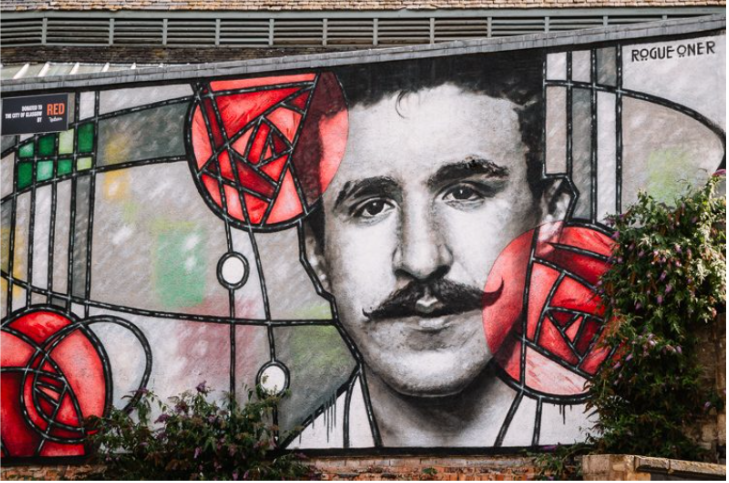How Glasgow’s pub walls keep culture alive.
In Glasgow, come rain or shine, the pub is a regularly visited friend. Huddling around a well-worn table with a few cold pints and time to share stories and unwind makes these places more than just venues for drinking. Instead, they become the heartbeat of communities. But before the chatter over empty Tennent’s glasses, come the very pub walls themselves, and around Glasgow, these walls have become a canvas; a chance to make art, culture and history accessible to the ordinary person.
Take The Clutha bar along the River Clyde: what was once an uninteresting building now features a striking black and white display of famous faces. all said to have visited the pub, including comedian Spike Milligan and musician Paolo Nutini. The mural publicly showcases home-grown talent and cultural icons, a lively reminder of Scotland’s artistic heritage and ongoing creative energy. But on a deeper level, the mural is proof that beauty can be born out of catastrophe, as The Clutha bar itself has a devastating history: during a bustling night in 2013, a helicopter crashed into the roof of the pub, resulting in ten deaths. The refurbishment of the pub included this decoration of the walls; a demonstration that art can reclaim a place of tragedy and refuse to let it be defined by loss. More recently, in 2018, a large mural of one of Glasgow’s most famed artists, Charles Rennie Mackintosh, was unveiled overlooking the bar, to commemorate the artist and architect 150 years after his birth. The eye-catching portrait was created by Rogue-One, a street artist known across Europe for his striking artwork, paying homage to Mackintosh’s distinct Art Nouveau style, with roses made of simple shapes and lines, brightening up the street with an artist worth remembering. These faces give pub-goers the chance to pick out the faces they know; to talk about history and culture, and bask in the beautiful work of renowned artists.
Or take Kitty O’Shea’s in the West End, a spot that amasses crowds of tipsy freshers every weekend, lined up beneath paintings of the iconic toucan, a symbol that a Guinness tap is not far away. Of course, this is a great marketing technique; even the air vents have been painted to remind the crowds of a creamy pint of Guinness, but the artwork also serves as a way to celebrate Irish heritage, and nod to the long history of migration that has shaped Glasgow’s culture.
Last year, popular nightclub and venue The Garage displayed a new mural honouring many of the well-loved music venues across the city, including Barrowlands, King Tut’s, and SWG3. The mural is bright, edgy and venerates the vibrant musical culture that’s alive and kicking across Glasgow. Named the UK’s first (and the third in the world) UNESCO City of Music, live gigs in Glasgow define cultural life as much as football matches. It reminds those who see it on a wild night out that our city is worth celebrating, and that, whether it be indie or mainstream, supporting independent venues is important.
But the art that pubs display doesn’t stop at the exterior, and it doesn’t stop with celebrated artists with years of practice. A trip to The Doublet might lead you into a cubicle in which the wall is covered in lipstick kisses. Gross to some, perhaps (toilet walls aren’t known for their cleanliness), but a sweet display of girls who have dolled up for dates and mates alike and are expressing the feeling of shared community and memories without saying a word. On the other wall, political statements and honest confessions are laid bare, safe in their anonymity to be as unrestrained as they like. In fact, many of my toilet trips in the city’s pubs and bars have left me more clued up on political affairs; eye-opening figures are revealed above statements on political violence that are closer to home than we may think. Resources, unions and societies are named as ways we can take action to move current affairs in the direction we want, while the abs versus biceps poll next to it is a reminder that Glasgow’s humour never really fades. Whether you consider this public art or just plain graffiti, it is shaping the way people think in their everyday lives.
Glasgow has long been a city that wears its culture on its walls, and the murals on pubs and venues fit into this tradition perfectly: visible, unpretentious and rooted in the spaces people actually use, and often. Street art and meaningful messages scribbled on the wall remind us that art is not reserved for galleries and museums, it lives in the places where people drink, argue, flirt, mourn and celebrate.
Image credit: Galina Walls
